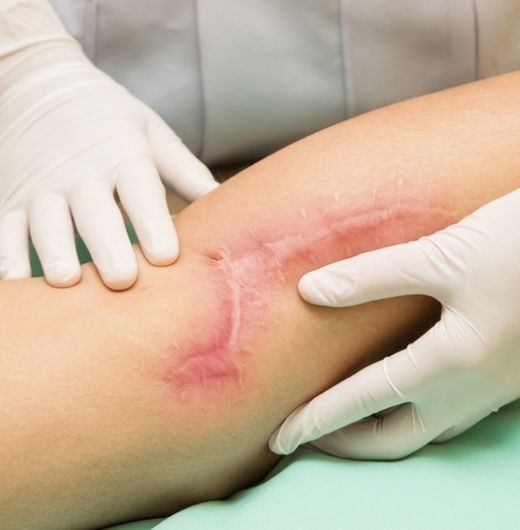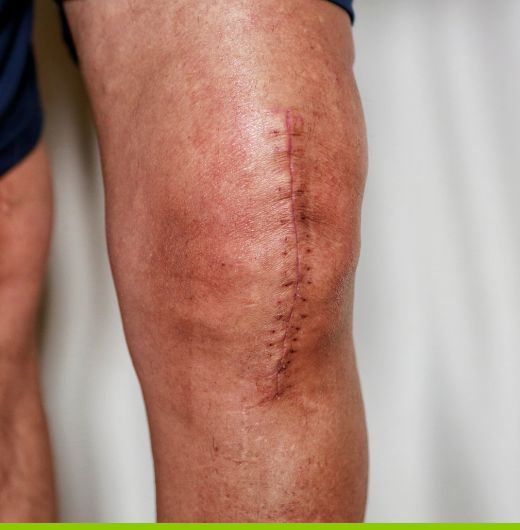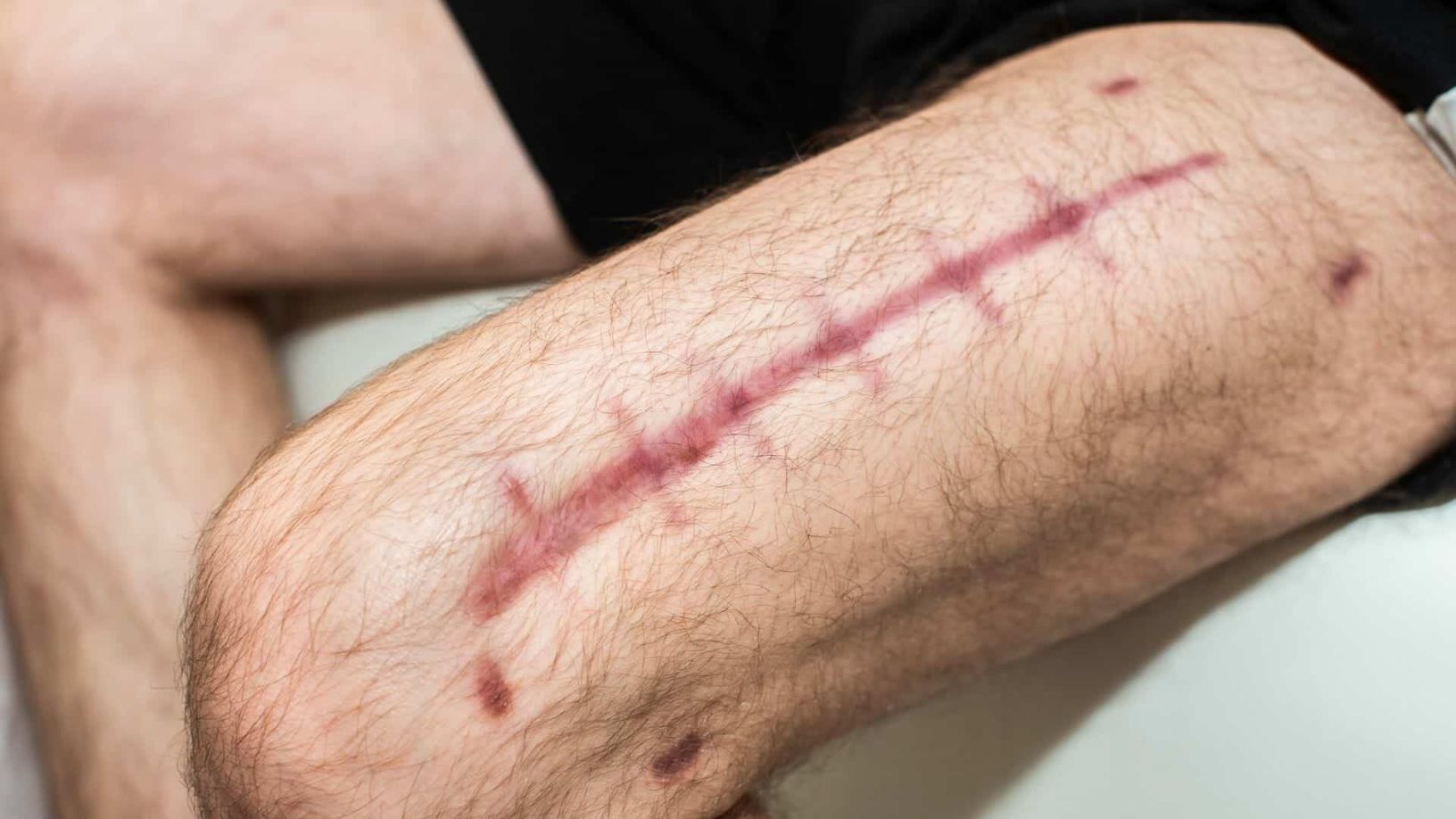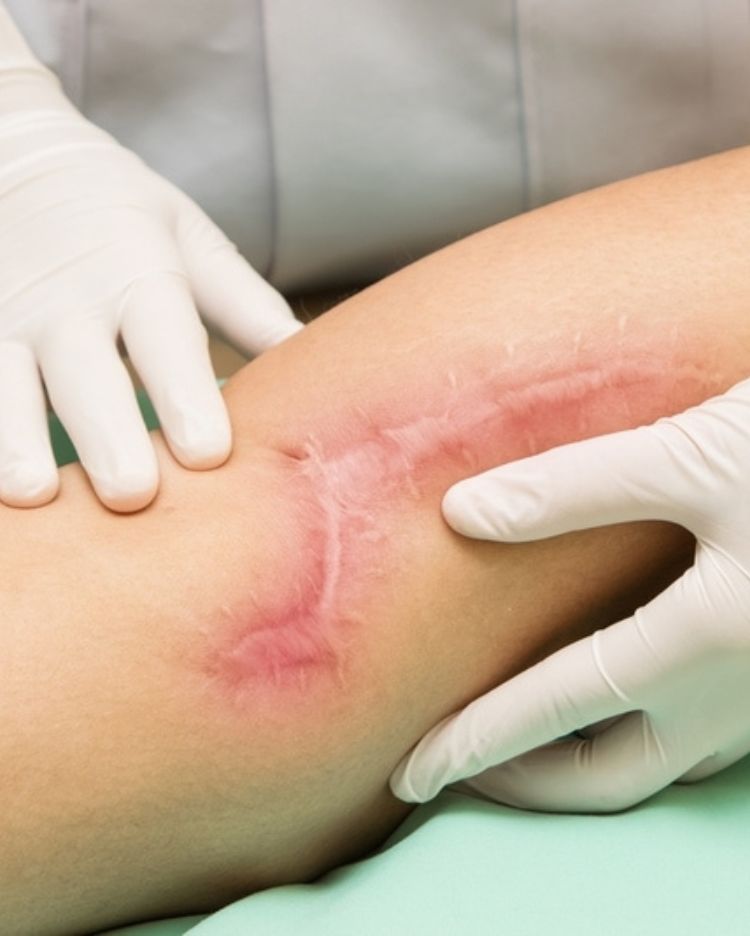The psychological effects of visible scarring can persist for years without proper intervention. Research shows that 13-45% of scar survivors develop PTSD, while 13-23% experience depression. With appropriate therapy and support, most individuals develop effective coping strategies within 1-2 years, though some emotional responses may continue long-term.
Trauma-related scarring encompasses both physical marks from serious injuries and the lasting emotional and psychological effects of a traumatic event. While physical scars may or may not fade over time, the associated emotional scars can profoundly impact a person’s mental health, self-esteem, and daily functioning.
The Emotioanl & Psychological Impact of Traumatic Scarring
Every year, millions of people survive accidents that fundamentally alter their relationship with their own bodies. A motorcycle slides across asphalt, leaving deep road rash that transforms smooth skin into a landscape of raised tissue. A surgeon’s scalpel saves an accident victim’s life but leaves behind a thick keloid that pulls with every movement. Roll-over accidents create degloving injuries that reconstruct not just skin but entire identities. Open fractures break through the body’s boundaries, healing into permanent reminders of the moment everything changed.
These physical trauma, no matter if scars are visible or hidden, persist long after the initial wounds close.
The Trauma of Visible Scars
Living with visible scarring fundamentally alters daily life and social interactions. Studies confirm that visible scarring is linked to significant psychological distress, including higher rates of depression, anxiety, and body image dissatisfaction. The severity of emotional impact varies considerably—even mild scarring can cause significant anxiety, while some individuals with extensive scarring may adapt more successfully over time. This variability underscores that psychological burden isn’t always directly correlated with objective scar severity.
Depression and Anxiety manifest as persistent challenges for those with visible scars. Individuals experience low mood, loss of confidence, and excessive worry about social encounters. The daily “mirror moment”—confronting their altered appearance—reinforces these feelings and can trigger a cycle of negative self-evaluation. Many report that the anticipation of the day ahead, knowing they will face stares or questions, creates anxiety that begins before they even leave their homes.
Body image dissatisfaction becomes a central psychological struggle. People with visible scars often develop a preoccupation with their appearance, constantly aware of how their scars might appear to others. This preoccupation extends beyond mere vanity—it represents a fundamental disruption in how individuals relate to their own bodies. The disconnect between their internal self-image and external appearance creates ongoing distress that affects multiple life domains.
Avoidance patterns develop as protective mechanisms. Stigma, negative social interactions, and fear of judgment lead individuals to avoid photographs, decline social activities, and withdraw from relationships. The workplace presents particular challenges, where visible scarring may influence professional interactions and career opportunities. Romantic relationships become complicated by disclosure decisions and intimacy fears. Seasonal challenges compound these issues—summer clothing and beach activities transform from simple pleasures into sources of significant anxiety.


Self-stigma emerges when individuals internalize societal prejudices about disfigurement. This internalization leads to feelings of worthlessness or shame, which significantly contribute to depression. Negative media portrayals and societal emphasis on physical appearance devalue and marginalize people with visible differences, reinforcing these internal struggles. The constant experience or anticipation of unwanted attention—stares, comments, and intrusive questions—increases psychological distress and reinforces self-stigmatizing beliefs.
Posttraumatic stress frequently accompanies visible scarring from traumatic events. Scars from burns, accidents, or violence serve as permanent reminders of trauma, triggering re-experiencing symptoms for those with PTSD. These visible markers prevent the psychological distancing often necessary for trauma recovery, as individuals cannot escape the physical evidence of their traumatic experience. The intersection of altered appearance, trauma triggers, and social challenges creates a complex psychological burden requiring comprehensive support, yet many individuals report that the emotional aspects of their scarring remain inadequately addressed in their recovery process.
Hidden Scars That Change How You See Yourself
Many studies on hidden scarring reveal significant emotional issues, including higher rates of depression, anxiety, and social phobia due to perceived stigma and self-consciousness. Research examining 361 burn survivors found that hidden scars create just as much psychological distress as visible ones, affecting body image and self-esteem regardless of whether others can see them. The emotional impact of hidden scars often exceeds what medical professionals predict based on physical severity alone, as these wounds carry complex psychological dimensions that remain largely unaddressed in clinical settings.
Living with invisible suffering creates unique challenges. While appearing physically intact in public, individuals with hidden scars struggle with profound body image issues in private. Friends, family, and even healthcare providers may minimize the psychological impact, assuming that concealed scars cause less distress than visible ones. This lack of understanding can leave people feeling isolated and invalidated in their emotional struggles.
For women, hidden scarring creates particular difficulties with body image and intimate relationships. Surgical scars from accidents, medical procedures, or trauma become what researchers describe as “private territories of changed sensation.” Women with surgical scars reported feeling “incomplete,” “half,” or fundamentally altered when viewing their bodies, describing their first encounters with scarred areas as fearful and emotionally exhausting. These feelings reveal how hidden scars disrupt a woman’s sense of wholeness and identity, even when clothing conceals the physical evidence.
The burden of deciding when and how to reveal scars becomes a constant source of stress. Unlike visible scarring where disclosure happens automatically, hidden scars create ongoing anxiety about revealing one’s altered body. This burden intensifies in romantic situations. Women reported that decisions about disclosure became ongoing sources of stress in romantic relationships, with many developing elaborate avoidance strategies and experiencing significant anxiety about intimate situations. The fear of a partner’s reaction—whether rejection, disgust, or pity—often causes more distress than the actual moment of disclosure.
Physical intimacy faces significant disruption from hidden scarring. Women might have worry about positioning to hide scars during intimate moments. Many mena nd women feel less sexually attractive and avoiding looking at themselves naked, with some avoiding intimacy altogether rather than risk exposure and potential rejection. The mental effort required to manage scar concealment—adjusting lighting, maintaining certain positions, or keeping clothing partially on—interferes with emotional and physical connection, creating relationship strain.
The Functional Impact of Scarring
Traumatic scarring significantly impacts multiple life domains by causing physical limitations, psychological distress including depression and anxiety, and social difficulties such as stigma and isolation. It can reduce self-esteem and confidence, hinder intimacy and communication, limit career options, and negatively affect the overall quality of life for affected individuals.
Career & Financial Repercussions
The financial impact of scarring creates long-term economic instability that compounds the original trauma. Evidence shows individuals with scars have increased unemployment rates and are less likely to be successful at job interviews, with reduced work opportunities and workplace prejudice creating significant financial impact . Physical limitations may make previous employment impossible—construction workers who can no longer lift, teachers who can no longer stand all day, or musicians whose hand scars prevent fine motor control must completely reimagine their professional futures.
Career changes often mean starting over at entry-level positions despite years of experience in another field. Retraining costs for new careers add to mounting medical bills. An inconsistent ability to access disability benefits adds to the financial burden , leaving many in limbo between being unable to work their previous job but not qualifying for adequate support. Lost promotion opportunities due to appearance-based discrimination or inability to fulfill certain job requirements limit lifetime earning potential.
The hidden costs multiply relentlessly: specialized clothing to accommodate or conceal scars, ongoing physical therapy, pain management treatments, mental health support, and transportation to numerous medical appointments. When public health systems don’t cover scar revision treatments like laser therapy or surgical revision, individuals must turn to expensive private sector options . Many exhaust savings, retirement funds, or accumulate crushing debt pursuing treatments that insurance deems “cosmetic” despite their functional and psychological necessity. Family finances suffer as spouses may reduce work hours to provide care, creating a dual income loss that can push families toward financial crisis.
Reduced Quality of Life
The cumulative burden of living with scars creates a profound reduction in overall life satisfaction that goes beyond individual challenges. Those with scars often express significantly decreased satisfaction with life, with mood disorders translating into increased alcohol abuse and social withdrawal . The constant management of physical discomfort, social anxiety, and practical limitations creates an exhausting cognitive load that drains mental energy needed for enjoying life’s pleasures.
Spontaneity disappears as every activity requires planning around scar-related concerns. Beach vacations lose their appeal when swimsuits cause anxiety. Social invitations trigger stress rather than excitement. Hobbies may be abandoned—gardeners whose hand scars make gripping tools painful, swimmers whose scars attract stares at the pool, or photographers whose facial scars make them uncomfortable at social events where they once thrived behind the camera.
The anticipation of rejection leads to concealment and avoidance, with people expressing a strong desire to be alone and avoid activities where they can be observed . This self-imposed isolation cuts them off from sources of joy and support. Relationships suffer as individuals withdraw from friends who “knew them before.” Family traditions may be disrupted when scarred individuals avoid gatherings where extended family might stare or ask questions.
The loss extends to simple pleasures: the confidence to try new restaurants, the freedom to join a gym, the ease of shopping for clothes in store dressing rooms, or the comfort of accepting a spontaneous invitation. Many describe feeling like they’re watching life through a window rather than participating fully. Dreams and goals may be abandoned or drastically revised—not due to physical impossibility but from the exhaustion of constantly battling physical discomfort, social stigma, and internal struggles. This erosion of life quality represents perhaps the greatest tragedy of scarring: not just the alteration of the body, but the gradual shrinking of a life once lived fully.


Intimacy and Love
The journey toward intimacy becomes deeply complicated for those living with scars. Evidence shows decreased frequency of sexual activity, adoption of unnatural positions to hide scars, and difficulty initiating new relationships, with initial meetings becoming awkward due to answering questions and recalling painful memories. Dating creates constant anxiety about disclosure—when to mention scars, how to explain them, and managing the moment of revelation. Many describe exhausting mental preparation before intimate moments: rehearsing explanations, arranging lighting, and planning which clothes stay on.
Research confirms that scars can lead to interpersonal rejection with negative effects on intimacy. Partners may struggle with their reactions—some offer excessive reassurances that feel insincere, while others withdraw physically, confirming the scarred person’s fears. Even in established relationships, scarring creates new tensions. Previously comfortable intimacy becomes self-conscious, spontaneity disappears, and the scarred partner may reject affection, unable to believe they’re still desirable.
The fear of being “settled for” rather than genuinely wanted can damage even loving relationships. Many choose self-imposed isolation, avoiding potential relationships entirely rather than risk rejection. They convince themselves they’re protecting both themselves and others from inevitable disappointment. This withdrawal from romantic life represents one of scarring’s cruelest impacts—the theft of not just confidence but the hope for connection and love that makes life meaningful.
The Body’s Daily Betrayals
Scars create ongoing physical challenges that extend far beyond their appearance. Scars can impede physical functioning, with burns creating inflexible scar tissue and keloids distorting appearance while compromising functionality, particularly when located across joints where they restrict movement and reduce ability to perform activities of daily living . These limitations affect not just major activities but countless small daily tasks that others take for granted.
Chronic pain becomes a constant companion for many scar survivors. Nerve damage creates shooting pains, burning sensations, deep aching, or numbness that medication may only partially relieve. Weather changes trigger increased discomfort in scarred areas—many describe being able to “predict storms” through their scar pain, with barometric pressure drops making their scars “scream.” The constant itching in healing or healed tissue can be maddening, especially when scratching risks further damage or infection. Sleep disruption from positional discomfort or night pain creates cascading effects on mental health, work performance, and family relationships.
Simple tasks become obstacles: reaching overhead shelves, bending to tie shoes, or turning your neck to check blind spots while driving. Exercise routines must be modified or abandoned entirely. Activities once taken for granted—playing sports, gardening, dancing at weddings—may become impossible or require extensive adaptation. Exercise and physical activities that once brought joy become sources of frustration as scars limit flexibility, create discomfort, or attract unwanted attention in gym settings.
Sensitivity issues complicate clothing choices beyond aesthetic concerns. Rough fabrics cause irritation, tight clothing triggers pain, and certain materials stick to scarred skin uncomfortably. Clothing choices revolve around minimizing irritation rather than personal preference. Sun sensitivity in scarred areas requires constant vigilance with sunscreen and protective clothing, as scarred skin burns more easily and may lack normal temperature regulation, causing overheating or excessive cold sensitivity.
These physical limitations create a cascade of secondary effects: reduced fitness from limited exercise options, weight gain from decreased activity, and social isolation from inability to participate in physical activities with friends and family. The cumulative impact transforms the body from a source of capability and pleasure into something that must be constantly managed, negotiated, and accommodated.
The Emotional Impact of Scarring
Depression
The Weight of Loss Depression frequently emerges as individuals grieve not just their former appearance but their entire sense of self. Scarred patients often describe their new appearance as “living with the trauma,” triggering cascades of shame, self-rejection, and self-consciousness . The daily confrontation with their altered body in mirrors, reflections, and photographs reinforces feelings of loss and hopelessness. Many describe a persistent emptiness, as if the accident took more than just their unmarked skin—it stole their identity, confidence, and joy. Activities that once brought pleasure feel meaningless when filtered through the lens of self-consciousness. Sleep disturbances, appetite changes, and loss of motivation compound the struggle. The depression often feels justified and therefore untreatable, as individuals believe their sadness is a reasonable response to their permanently altered state.
Anxiety
Living in Fear Anxiety becomes a constant presence, with individuals developing hypervigilance about their appearance and others’ reactions. The anticipation of rejection leads to concealment and avoidance behaviors, with the resultant social disability characterized by avoidance of eye contact, closed body language, and shutting down conversations . Many experience panic attacks when facing situations where scars might be exposed or noticed—medical appointments, intimate moments, or swimming pools. The anxiety begins before leaving home, as individuals mentally map out potential triggers and escape routes. Physical symptoms like racing heart, sweating, and trembling accompany social interactions. Generalized anxiety expands beyond scar-related concerns, creating a pervasive sense that the world is unsafe. The exhaustion from constant anxiety management leaves little energy for healing or moving forward.
Anger and Frustration
For many, anger simmers beneath the surface—at the accident, at their changed body, at others’ reactions, and at life’s unfairness. The heightened awareness of scars can manifest as anger, anxiety, and frustration, ultimately leading to aggression . Frustration builds from countless daily accommodations: clothing that doesn’t fit right over scars, activities that must be modified or abandoned, and constant explanations to curious strangers. Many describe rage at well-meaning but hurtful comments like “it could have been worse” or “at least you survived.” The anger may be displaced onto loved ones who become targets for irritability and outbursts. Some turn anger inward, fueling self-destructive behaviors or deepening depression. Finding healthy outlets for this justified anger becomes crucial but challenging when physical limitations restrict traditional stress relief methods.
Shame and Self-Stigma
The Enemy Within Shame penetrates deeper than embarrassment about appearance—it becomes a core belief about being fundamentally damaged or unworthy. Self-stigma emerges when individuals internalize societal prejudices about disfigurement, leading to feelings of worthlessness that significantly contribute to depression . Many describe feeling “contaminated” or “ruined,” as if the scars reveal some inner defect. The shame extends to needing help, having limitations, or being unable to “get over it” as quickly as others expect. Individuals may feel ashamed of the burden they place on family or the accommodations others must make. This internalized stigma becomes more damaging than external judgment, creating an inner critic that reinforces negative beliefs constantly. Breaking free from shame requires challenging deeply held beliefs about worth being tied to physical appearance.
Perceived Stigma: What others think
Perceived stigma creates a psychological burden where individuals constantly anticipate negative reactions from others. People with scars experience intrusive questions, stares, and strangers maintaining greater physical distance, making them acutely aware of their difference and conditioning them to expect hostile reactions . The exhausting mental effort of scanning every social situation for potential judgment drains energy needed for healing. Many feel their scars tell a story to strangers that they cannot control—false assumptions about violence, self-harm, or carelessness. Even neutral glances get interpreted as disgust or curiosity, creating a cycle where fear of rejection leads to social withdrawal. The anticipation of stigma often causes more damage than actual negative encounters, as individuals limit their lives based on imagined rather than real rejection.
Social Anxiety
Visible scars transform routine social interactions into sources of intense anxiety and distress. The constant experience or anticipation of unwanted attention—stares, comments, and intrusive questions—increases psychological distress and leads to social avoidance behaviors . Simple activities like grocery shopping, attending children’s school events, or meeting new coworkers become overwhelming when scars draw curious or uncomfortable looks. Many develop elaborate strategies to minimize visibility: arriving late to avoid mingling, choosing seats that hide scarred areas, or declining social invitations altogether. The anxiety often begins hours or days before an event, with individuals rehearsing explanations, planning escape routes, or ultimately canceling plans. This social withdrawal reinforces isolation and prevents the positive interactions that could rebuild confidence, trapping individuals in a cycle where fear of social situations grows stronger with each avoided opportunity.
Distorted Body Image: When the Mirror Becomes the Enemy
Scars fundamentally alter how individuals perceive and relate to their own bodies, creating a painful disconnect between internal identity and external appearance. The mismatch between appearance and identity triggers psychological shifts that invoke feelings of anxiety and shame, with scarred patients describing feelings of shame, self-rejection, and self-consciousness about their altered appearance . Many report avoiding mirrors, photographs, or reflective surfaces, while others become obsessively focused on their scars, checking them constantly and perceiving them as larger or more noticeable than they actually are. The distortion extends beyond the scarred area—individuals often view their entire body as damaged, unattractive, or fundamentally changed. This negative body image infiltrates every aspect of self-worth, from feeling undeserving of love to believing they’re professionally inadequate because of their appearance. The result is persistently low self-esteem that resists logical counter-arguments or reassurances, as the emotional conviction of being “ruined” or “damaged” overwhelms rational understanding that worth isn’t determined by physical appearance.

I highly recommend Lalande Personal Injury Lawyers legal team. Matt Lalande and his team are caring, compassionate and patient. From our first appointment to the last, we always knew what to expect and were encouraged to ask as many questions as needed. Matt’s knowledge, experience and professionalism is outstanding. He is also very friendly, kind and relatable. Sarah was a pleasure to work with – always so friendly, helpful and available. Their clear communication, during our difficult situation, made things less stressful. We are thankful to have had them on our side. – Kristy Sarrazin
Don’t Let Insurers Minimize the Impact of Scarring. Our Hamilton Personal Injury Lawyers can Help
If you’ve suffered traumatic scarring in an accident caused by someone else’s negligence or carelessness, your recovery should address not only the physical damage but also the profound emotional and psychological impact. Visible scars can affect confidence, relationships, and opportunities in ways that are often overlooked or minimized. Healing is not about returning to who you were before the accident, but about finding strength, resilience, and support as you move forward.
At Lalande Personal Injury Lawyers, we understand that scars represent more than surface changes—they carry emotional trauma, social challenges, and lasting psychological effects. These consequences are real, measurable, and compensable under Ontario law. Too many survivors are left to cope alone, unaware of the rights and compensation available to them.
Our team has recovered over $30 million for accident victims because we fight for recognition of every aspect of your suffering, including the hidden emotional costs that insurers often try to ignore. You deserve a legal team that takes the full scope of your injuries seriously and works to secure the compensation you need to rebuild your life.
Don’t wait to get the help you need and deserve. Call Ontario at 905-333-8888 or alternatively, fill out a confidential contact form and we would be happy to explain your rights to you without cost or obligation.
Article FAQs
Cognitive-behavioural therapy (CBT) and acceptance and commitment therapy (ACT) have shown the most effectiveness for scar-related distress. CBT helps modify negative thought patterns about appearance, while ACT focuses on accepting changed circumstances while pursuing meaningful activities. Support groups and psychiatric medication may also be beneficial.
Children and adolescents face unique challenges as visible scarring occurs during critical identity development periods. Young people may experience disrupted social development, academic difficulties, bullying, and heightened self-consciousness. Early intervention and specialized child psychology support are essential for preventing long-term emotional complications.
Family support should balance emotional care with maintaining normal expectations and activities. Avoid overprotection, which can prevent necessary emotional growth. Continue regular family routines, support professional treatment recommendations, and educate yourself about trauma recovery. Professional family counselling may help navigate relationship changes.
Yes, Ontario law recognizes psychological effects of visible scarring as legitimate grounds for compensation. General damages for pain and suffering can reach up to $450,000 for severe cases. Recent Ontario cases have awarded $8,000-$125,000 specifically for scar-related psychological damages, with facial scars typically receiving higher compensation.


